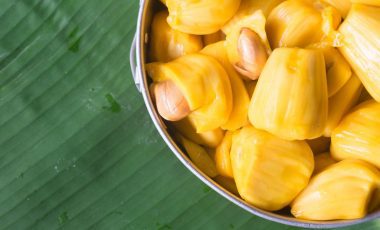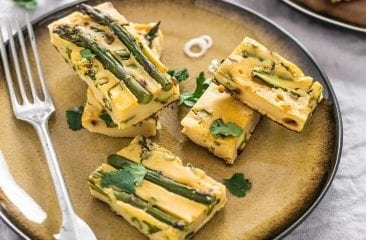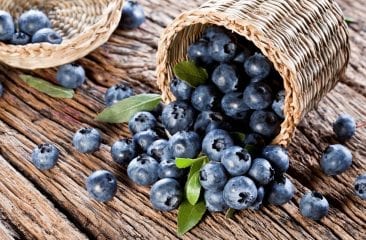Did you know that couscous is not a cereal at all but a dish? Learn more about these tiny balls of grainy goodness from North Africa.

Small, round and incredibly versatile – couscous is a popular dish from the Middle East, where it is one of the most important staples and a must at every meal. In European countries, it would be comparable to potatoes or pasta. But even here, couscous is becoming more and more popular. Why, you ask? You can prepare it in the blink of an eye, combine it with a wide variety of dishes and its ingredients and taste are first-rate.
The term couscous derives from the Arabic word kuskusu, which means something like “ground” or “crushed”. This reveals something about how this popular dish – considered the national dish of Morocco – is prepared. To make couscous, tiny, roughly millimetre-sized balls of ground semolina are moistened and then dried in the sun. Couscous is therefore not a type of grain, but rather semolina prepared in a specific way. Depending on the country, the base for the semolina is different. It is possible to have couscous made of wheat, barley or millet, although here the most common form is made from durum wheat semolina.
Preparation: tradition vs. speed
Couscous is first mentioned in a Muslim cookbook, dating from the 13th century. The dish was brought to Europe by Jewish immigrants, or in the case of France, by Algerian immigrants. The traditional preparation method is anything but quick. To make couscous, Middle East, a special double-chambered pot or “couscoussier” is used. Various vegetables are prepared in the lower chamber of the pot, while the couscous remains protected in the upper chamber and is cooked slowly by the rising steam.
Where we are it is common to find so-called “instant couscous” which is pre-steamed and thus quick and easy. This form of couscous is even quicker to prepare than pasta and therefore makes a wonderful side dish when time is of the essence. All you have to do is pour a little hot water over these golden granules, let them soak for about five minutes and then they’re done. Curious to find out more? Perhaps the only question left for us to answer is why does this North African staple taste so incredibly good?

Sweet or savoury, a true all-rounder
As we’ve said, couscous can be combined with nearly anything. Traditionally, couscous is eaten with a wide range of vegetables such as carrots, cabbage or tomatoes and as an accompaniment to chicken, beef, lamb or fish. Where we are, it is most commonly found in the form of couscous salad. For your next barbecue party, just make some couscous according to the package instructions and mix in some chopped tomatoes, spring onions, parsley and feta. Of course you can use other ingredients as you like – let your imagination go wild! A bit of olive oil, a pinch of salt and pepper and a dash of lemon juice and you’ve got a well-rounded salad and a real culinary treat. A couscous salad almost tastes better the next day after all the ingredients have had a chance to properly soak in. This makes it an excellent candidate for meal prepping. Just leave your salad in your Liebherr fridge overnight so you know it’s fresh and delicious the next day.
Couscous is great as a salad ingredient or as a side dish with fish, meat or a wide variety of vegetables – but it can be more, so much more! These semolina grains are also very popular both here and in the Middle East as a sweet dish. Just slice some of your favourite fruits, add a little honey and mint as well as typical Middle Eastern ingredients such as cinnamon, dates and raisins, mix it all in with your couscous and enjoy it as a snack or a dessert. Give it a try!

Low-fat and yet so filling
This, of course, raises the question, whether couscous, beyond tasting exceptional, is also good for our waistlines and our health in general. We would be remiss if we didn’t mention that couscous, like all other grain-based dishes, is loaded with carbohydrates – in total, there are 28 grammes of carbohydrates and 147 calories in 100 grammes of couscous. The good news: For the most part, they’re complex carbohydrates, which means they make you feel full for a long time. Beyond, that, there is relatively little fat and quite a lot of fibre, minerals and B vitamins in this North African semolina. Couscous also has five times as much protein as potatoes and, like European varieties of semolina, it’s also a delicious option for vegans. Anyone looking to trim down a bit should look no further than couscous. However, do think twice about some of the fatty sauces and accompaniments it is often enjoyed with.

Buying and storing
Couscous is now available in almost any supermarket. Anyone wishing to avoid pesticides and long transport chains and should definitely head to their local organic food provider. If you’ve found the couscous variety that’s just right for you, you can store large quantities of it without any worry – so you always have a ready supply any time, you need a delicious dinner go-to. However, once you’ve opened the packaging, you should reseal it so it’s air-tight, or better yet, put your couscous into sealable containers. Store your couscous in a cool and dry location and use it as soon as possible, as the vegetable fats contained in couscous can quickly go rancid.
#liebherr, #couscous, #northafrica, #oriental, #morocco, #staple, #filling, #carbohydrate, #fibre, #vitaminB, #glutenfree, #vegan, #salad, #couscoussalad, #sidedish, #sweet, #savoury





